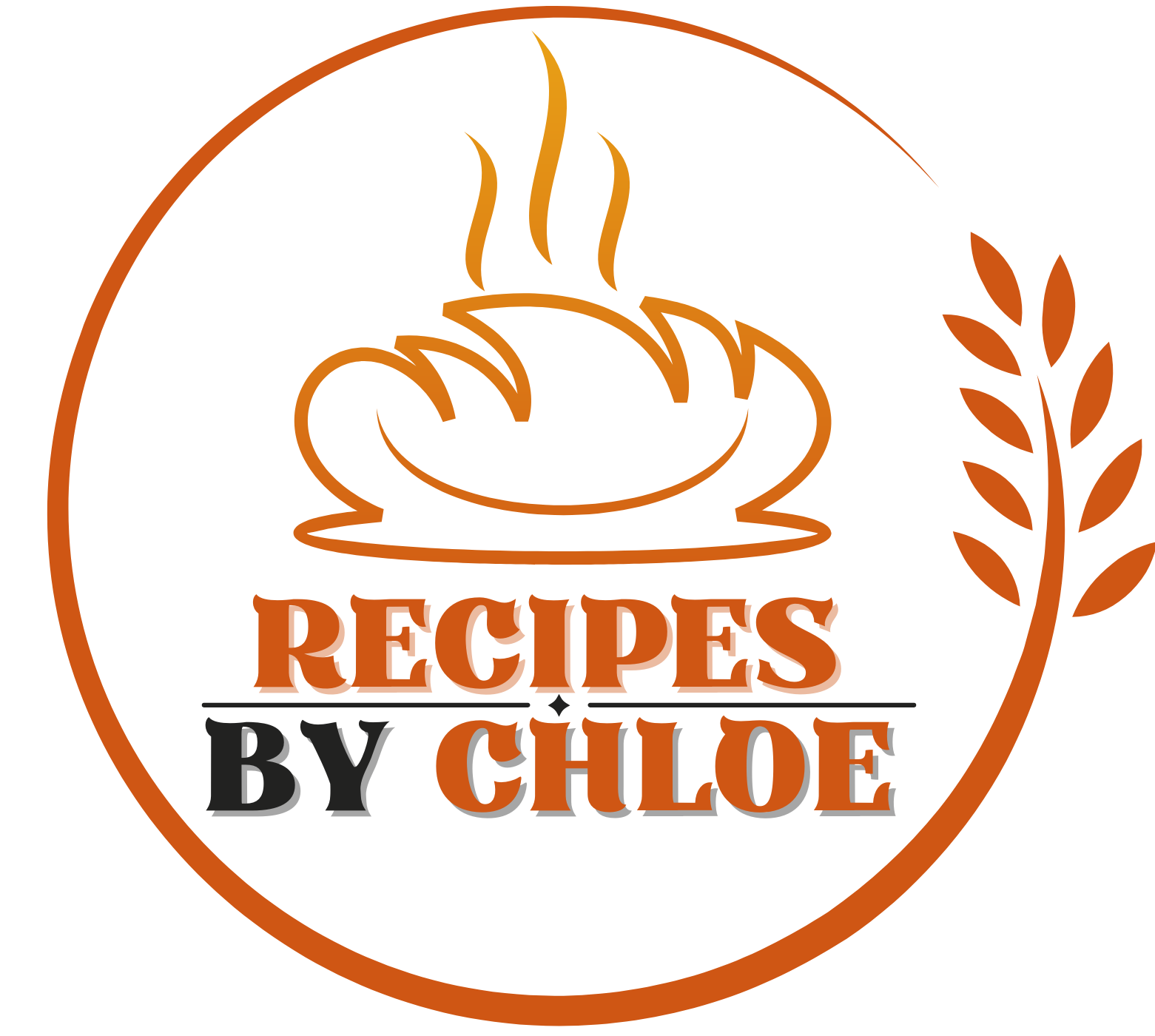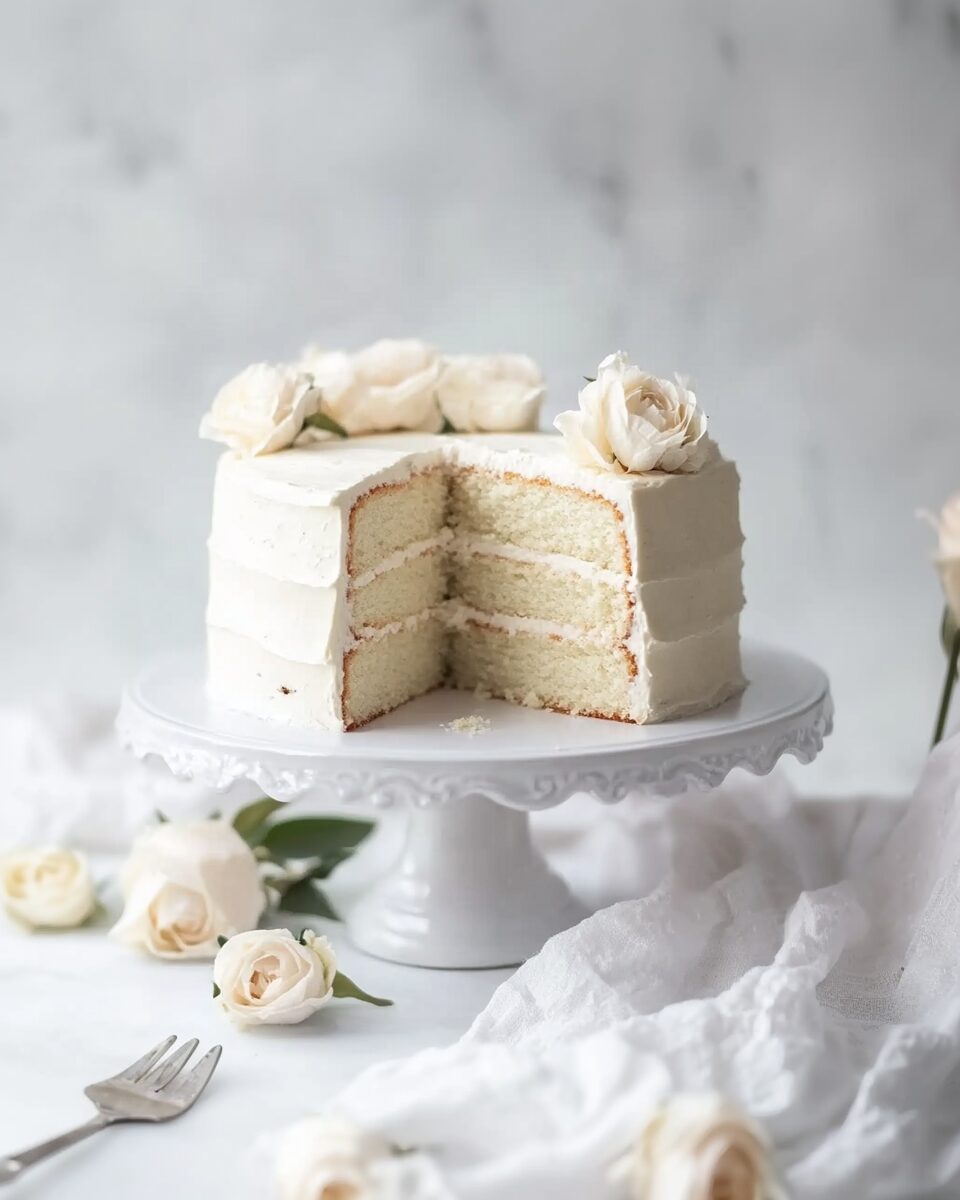This classic white cake recipe is light, fluffy, and absolutely perfect for celebrations like birthdays, weddings, or any special occasion. With its delicate crumb and heavenly vanilla flavor, this cake pairs beautifully with buttercream or your favorite frosting. Ideal for those who love a simple yet elegant dessert, this white cake will easily become a staple in your baking repertoire.
Full Recipe:
Ingredients
- 1 cup (226g) unsalted butter, softened
- 1 ½ cups (300g) granulated sugar
- 2 teaspoons clear vanilla extract
- 6 large egg whites (about ¾ cup), room temperature
- 2 ½ cups (320g) cake flour
- 1 tablespoon baking powder
- ½ teaspoon salt
- 1 cup (240ml) whole milk, room temperature
Directions
- Preheat oven to 350°F (175°C). Prepare two 8-inch round cake pans by greasing and lining the bottoms with parchment paper.
- In a large bowl using a hand or stand mixer, cream the butter and sugar together on medium-high speed until light and fluffy, about 3-5 minutes.
- Add in the vanilla extract and mix until combined.
- Add the egg whites gradually, mixing well after each addition, until the mixture is light and airy.
- In a separate bowl, whisk together the cake flour, baking powder, and salt.
- Add the dry ingredients to the butter mixture alternately with the milk, beginning and ending with the flour mixture. Mix just until combined—do not overmix.
- Divide the batter evenly between the prepared pans and smooth the tops.
- Bake for 25–30 minutes or until a toothpick inserted in the center comes out clean.
- Let the cakes cool in the pans for 10 minutes, then turn them out onto a wire rack to cool completely before frosting.
Nutrients (Per Serving – based on 12 servings)
- Calories: ~330 kcal
- Total Fat: 15g
- Saturated Fat: 9g
- Cholesterol: 45mg
- Sodium: 180mg
- Total Carbohydrates: 45g
- Dietary Fiber: 0g
- Sugars: 25g
- Protein: 4g
choice. Its light, airy texture combined with its delicate vanilla flavor makes it the ideal base for a variety of frostings and fillings, and its versatility allows it to be dressed up or down depending on the occasion. In this article, we’ll dive deep into what makes the perfect white cake so beloved, offer tips for ensuring success, and discuss ways to customize the recipe to fit your preferences or dietary needs.
What Makes the Perfect White Cake?
The ideal white cake is a delicate balance between fluffiness and structure. The cake should have a fine crumb that is soft and tender without falling apart, and it should have a subtle sweetness that complements the frosting and any fillings. Unlike yellow or butter cakes, white cakes are made with egg whites rather than whole eggs, which gives them their signature pale color and light texture.
The flavor of a white cake is often described as vanilla-forward, but not overwhelmingly sweet. The cake’s simplicity makes it the perfect base for layering flavors, whether you’re adding fruit, chocolate, or a rich, creamy buttercream. It’s a simple recipe, but the magic lies in its balance and its ability to shine on its own or to complement other ingredients.
The Importance of Ingredients in Baking a Perfect White Cake
While the process of baking is important, the ingredients you use also play a crucial role in achieving the perfect white cake. Let’s take a closer look at the key ingredients that come together to create this soft, fluffy dessert.
Butter
Butter is a staple in most cake recipes, and for good reason. In a white cake, it adds a rich flavor and helps provide moisture to the cake. Be sure to use unsalted butter to have control over the amount of salt in your recipe. Allowing the butter to soften before creaming it with the sugar ensures it incorporates evenly into the batter, contributing to a smooth, airy texture.
Granulated Sugar
Sugar is not only the source of sweetness in the cake but also contributes to its texture. When creamed with the butter, sugar helps create tiny air pockets, resulting in a lighter, fluffier cake. Granulated sugar is ideal for this process, and it’s important to cream it with the butter until the mixture is light and fluffy to achieve the desired cake texture.
Egg Whites
Egg whites are the star ingredient in a white cake, contributing to the lightness and airy texture of the final product. By using only egg whites, you avoid the yellow color that comes from the egg yolks, ensuring the cake remains white. Egg whites also help provide structure to the cake, which is essential for maintaining its form.
Cake Flour
Cake flour is a lower-protein flour that gives cakes their soft, tender crumb. It has less gluten than all-purpose flour, resulting in a finer texture. If you can’t find cake flour, you can substitute with a combination of all-purpose flour and cornstarch, but the end result may not be as light and delicate.
Baking Powder and Salt
Baking powder is the leavening agent in a white cake, helping it rise and become light and fluffy. Salt is important for balancing the sweetness of the cake and enhancing the other flavors. Be sure to measure both ingredients accurately for the best results.
Whole Milk
Whole milk adds moisture and richness to the cake. For the best results, make sure the milk is at room temperature before mixing it into the batter. Cold milk can cause the batter to seize up and prevent the ingredients from mixing properly.
Baking the Perfect White Cake: Tips for Success
While the ingredients are crucial, there are several tips and tricks you can follow to ensure that your white cake turns out perfectly every time.
Room Temperature Ingredients
One of the most important tips for making a perfect white cake is to use room temperature ingredients. This applies to the butter, eggs, and milk. When these ingredients are at room temperature, they blend together more easily, resulting in a smoother batter and a more even cake texture. Cold ingredients can cause the batter to curdle or not emulsify properly, leading to a dense or uneven cake.
Don’t Overmix the Batter
Overmixing the batter can lead to a tough, dense cake because it encourages the development of gluten. Mix the ingredients just until combined, and stop when you no longer see streaks of flour. Overmixing can also cause the cake to lose some of its lightness, so be gentle when incorporating the flour and milk.
Properly Prepare Your Cake Pans
Greasing and flouring your cake pans or lining them with parchment paper ensures that your cake doesn’t stick to the pan and can be easily removed after baking. Some bakers also recommend using cake release spray, which works even better than butter and flour, especially for ensuring a clean and smooth surface when you remove the cakes from the pans.
Baking Time and Temperature
Baking your cake at the correct temperature is critical to achieving the right texture. An oven that’s too hot can cause the cake to brown too quickly on the outside while remaining undercooked in the center. Conversely, an oven that’s too cool can cause the cake to rise unevenly. Be sure to preheat the oven properly and check for doneness using a toothpick inserted into the center of the cake. It should come out clean or with just a few moist crumbs attached.
Customizing Your White Cake
While the perfect white cake recipe is delicious on its own, there are numerous ways to customize it to suit your tastes or the occasion. Below are a few ideas for variations and additions:
Flavors and Extracts
You can infuse additional flavors into the cake batter to make it more unique. Almond extract, lemon zest, or even coconut milk can be added to give the cake a different flavor profile. Just be sure to use extracts sparingly, as they can be quite potent.
Adding Fillings
If you’re preparing the cake for a special occasion, you can add layers of filling between the cake layers. Fresh fruit, jam, chocolate ganache, or even a layer of pastry cream are all delicious choices. These fillings can complement the cake’s mild vanilla flavor and add texture and richness.
Frosting and Decoration
The perfect white cake is often paired with a light and fluffy frosting, such as buttercream, cream cheese frosting, or whipped cream. The frosting can be flavored with extracts, such as vanilla or citrus, or even chocolate for a different twist. For a fun touch, you can decorate the cake with sprinkles, edible flowers, or other decorations that match the theme of your celebration.
Dietary Adjustments
If you have dietary restrictions or preferences, you can modify the white cake recipe to accommodate your needs. To make it dairy-free, substitute the butter and milk with plant-based alternatives like coconut oil and almond milk. For a gluten-free version, swap the cake flour with a gluten-free flour blend. While these substitutions may slightly alter the texture, they can still produce a delicious cake.
Conclusion: Why the Perfect White Cake is Worth Baking
The perfect white cake is more than just a simple dessert; it’s a versatile, crowd-pleasing treat that can be customized in a variety of ways to suit different tastes and occasions. Whether you’re preparing it for a special celebration or enjoying it on a quiet afternoon, this cake delivers the perfect balance of lightness, flavor, and texture. With a few simple ingredients and a bit of attention to detail, you can create a white cake that rivals any bakery’s version.






